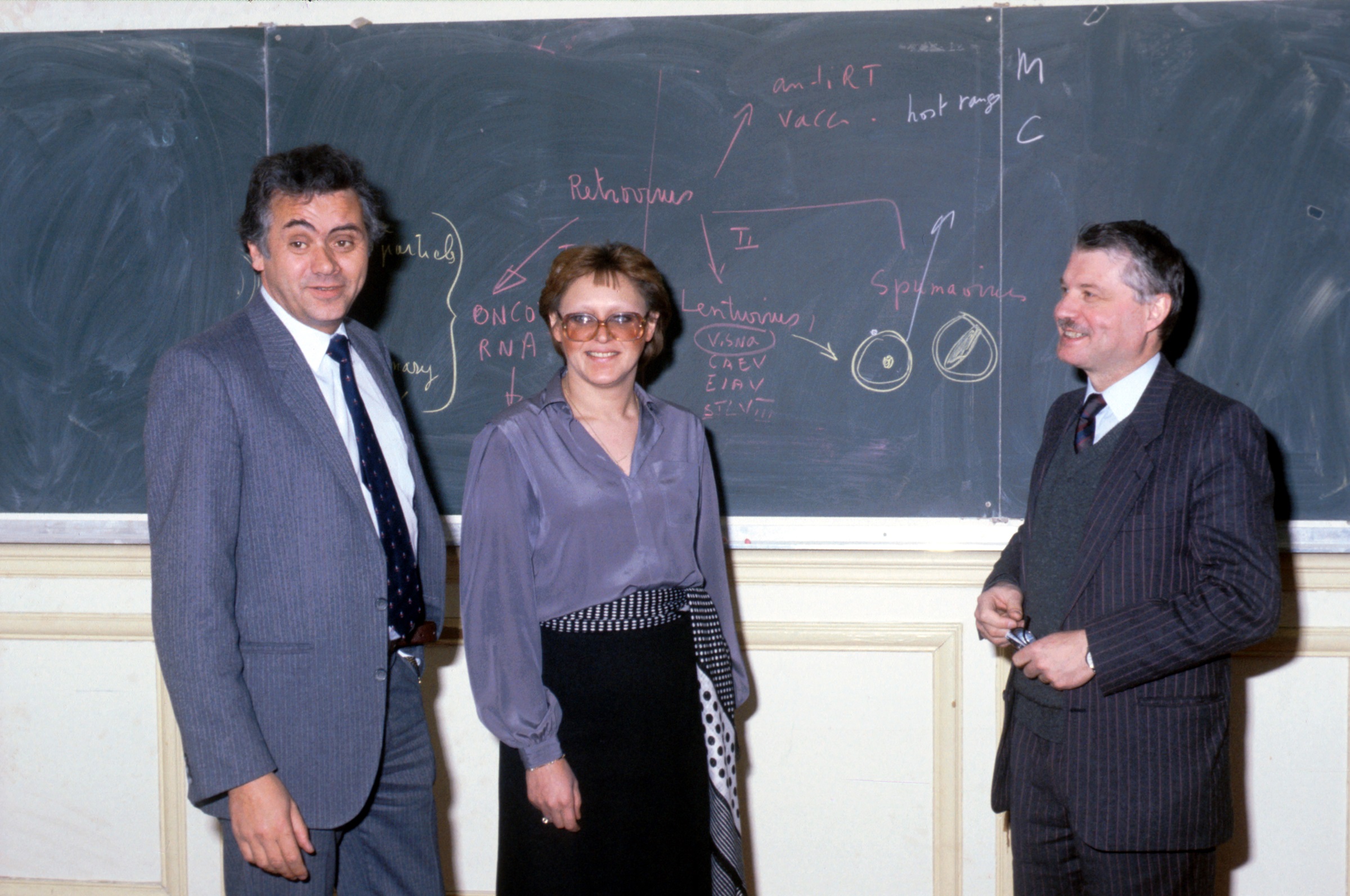On the afternoon of June 1, in the Institut Pasteur‘s auditorium, scientists, patients and associations who had worked with researcher Françoise Barré-Sinoussi appeared on stage to salute an exceptional researcher and a great woman. That evening, two round-table events were organized in a Parisian cultural venue open to the public, that focused in particular on interactions between researchers, patients and carers. An opportunity to look back over 40 years of history, research and challenges, in which France played a key role.
In 1981 the first cases of a totally unknown disease were identified in the United States. In December 1982, young researcher Françoise Barré-Sinoussi was working in Jean-Claude Chermann’s laboratory, within Luc Montagnier’s Viral Oncology Unit. The team was then contacted by clinicians and virologists at the Hôpital Bichat in order to isolate an unknown retrovirus, most likely related to HTLV (human T-lymphotropic virus). In January 1983, a first lymph node sample from a pre-AIDS patient was brought to the laboratory.
“It all began in 1982 with a meeting with fellow clinicians who described to us the observations they had made of the first French patients, convinced that a retrovirus could be responsible for this new disease (…) Everything happened extremely quickly – we carried out the first tests on January 12, 1983, and already had significant reverse transcriptase activity by January 27,” Françoise Barré-Sinoussi, retrovirologist and co-discoverer of HIV.
The first photograph of the virus was taken by the unit’s “microscopist”, Charlie Dauguet, on February 4, 1983. May 20, 1983 is officially the date the retrovirus that causes AIDS was identified. This was the date on which the first work carried out on HIV by virologists at the Institut Pasteur was published in Science, but it wasn’t until 1984 that they discovered that this virus was indeed the cause of AIDS. As early as 1984, patients started flocking to the Institut Pasteur, as it had its own hospital.
It was necessary to “mobilize other teams – immunologists, molecular biologists, clinicians and patients, with the knowledge that there was not enough time to find a treatment to save those who were already ill (…) We were having to deal with people who were coming to the Institut Pasteur to ask us questions about the virus. From the human point of view, it was a very difficult time,” Françoise Barré-Sinoussi said. Their work led to her and Luc Montagnier being awarded the Nobel Prize in Physiology or Medicine in 2008.
The virus was finally given the name HIV in 1986, standing for “human immunodeficiency virus”. For the past 40 years, this epidemic has been one of the world’s greatest public health challenges. It has caused around 40 million deaths in total. Just as many people are currently living with HIV. Although treatments have advanced by leaps and bounds, 1.5 million new infections were recorded in 2021 worldwide.
A serological diagnostic test for infected patients was produced in 1985. AZT, the first antiretroviral drug was developed in 1987. 1996 saw a significant advancement with the arrival of triple therapies (a combination of three anti-HIV molecules). Five years later, developing countries were authorized to manufacture generic drugs. In 2012, the first antiretroviral cocktail effective in preventing transmission (Pre-exposure Prophylaxis or PrEP) was launched on the market. In 2021, the first injectable antiretroviral treatment was developed in the United States.
The “zero HIV deaths by 2030” objective is part of the international strategies (UNAIDS, Unicef and WHO) designed to bring about the “end of AIDS by 2030”, along with the “zero transmission” and “zero discrimination” objectives.
Although no vaccine has yet been developed, research and international collaboration is continuing. Clinical trials will begin this year in France in order to test new broad-spectrum neutralizing antibodies, and promising natural killer cells.
Today, research at the Institut Pasteur is focused on eliminating persistent viral reservoirs in infected individuals, in order to help bring about lasting remission, or even a cure. An international scientific symposium will be organized from November 29 to December 1, 2023, at the Institute in order to take stock of the progress made.



